Graduates in their 40s who made career advancements

Mr. FUJITA Satoshi
PROFILE
Information and telecommunications company
Graduated from Fukushima University
Completed the Master Program of Information Systems Architecture in 2017
Leveraging one’s own strengths in practice with unique perspective
Enrolled after being drawn in by interesting classes
I lightheartedly decided to study at AIIT in order to keep up with the latest trends in project management (PM), which I had not practiced due to being posted in the US. This is while I started out as a non-degree student.
I later joined through regular admission because the classes were interesting. Because I was commuting to school while working, I had to run to make it in time for class after finishing work, or watch videos of classes late at night after returning home. Looking back, it was a very difficult time, but I only have fond memories of being a student. This is proof that I was able to continue my studies until completing the program.
Connecting experiences and performance with knowledge
The project management-related courses not only covered the IT field in which I had experience, but also case studies in a wide variety of industries and sizes. Having learned from a wealth of examples and gaining an insight into what I once lacked in previous experience and knowledge, my perspective on the project increased.
After regular admission, I chose the Business Architect course that was just set up in the Information Systems Architecture program. While staying in the US, I was based in Silicon Valley, where I was involved in identifying and researching local startups. I wanted to combine my experiences there with the knowledge I would learn at AIIT and build a solid core as a professional.
I also saw business analysts working as a profession there. Since I had some confidence in my business analysis experience in the IT field, I also wanted to deepen my understanding of business analysis in the course.
In the project-based learning I worked on in my second year, we worked on a project to systematize and summarize the project management of a startup. SUBOK, named after the international standard body of knowledge for project management called PMBOK®, is a substantial book that was edited in the half a year, and is expected to mature in content after revisions in the future. In the area of business analysis, I acquired the CBAP® (Certified Business Analysis Professional) certification, which is required for professional business analysts, while still studying in school.
Continuing education to develop one’s own abilities
I am currently involved in CRM consulting, and do not have many real opportunities to put what I have learned at AIIT to practical use. However, I am convinced that I acquired a unique perspective on leveraging my strengths in business, and the ability to use them even without a company business card. Currently, I am broadening my horizons to business development, and working on innovation-related academic research while carrying out my daily work.

Mr. ISHII Hiroyasu
PROFILE
Foreign-affiliated computer company
Graduated from Sendai Dempa Kogyo College
(Currently National Institute of Technology, Sendai College)
Completed the Master Program of Information Systems Architecture in 2011.
Career development for a second life
Considering my career away from my position title in my company.
When I enrolled at AIIT, I had already built a career as a project manager (PM) while working for a major foreign-affiliated computer company for a quarter of a century. In my personal life, it was around the time my children grew up when I specifically started considering my life after turning 60 years old.
I had a dream of being an overseas volunteer to capitalize on my skills since I was young. To realize my dream after retirement, I thought I would need something to prove my skills without a position title at a company. That is why I decided to enroll at AIIT. My main objective was to earn a master's degree, as well as to expand my vision of society outside of the IT industry. AIIT has many leaders who built the foundation for IT in Japan. AIIT's curriculums are not only technical, but also teach basic knowledge of the Japanese IT industry. Students come from a wide variety of fields. For a person like me who has worked in a foreign-affiliated company based on American rules, I was attracted by what AIIT had to offer, which was that I could meet people who built careers in various industries and exposed to the majority of Japan's businesses.
AIIT offers sophisticated curriculums to allow students to acquire knowledge efficiently.
What I noticed after enrollment was that AIIT offers a sophisticated education. For example, the teaching of PM, in which I have experience and knowledge, is designed to allow students to efficiently acquire deep knowledge in a short time.
The same goes for PBL. The course offers themes to help students acquire specialized knowledge while working on a project. The theme my team worked on was to improve the existing simulation software developed to nurture PM to invent a new model. It all seems worthwhile now that we created something good because I am sure that the software is used in class even today.
More than these results, my valuable experience was to work on a project with younger people as classmates. I have younger staff who work for me at my company. I also have opportunities to interact with the younger generation. Even so, the relationships are as a boss and junior staff after all. In that sense, we were all classmates at AIIT despite the age gap. We discussed topics on an equal footing to be exposed to unexpected mindsets and sense of values.
If I think about it, younger people follow the order of older people only in companies where there are superior-inferior relationships. Regardless of overseas or in Japan, most social activities involve coordination with different generations. While working on PBL, I felt that I was rehearsing social activities.
By the way, the company where I work now is not where I worked when I enrolled at AIIT. I switched jobs around the time of completing the program. The biggest reason is I wanted to maximize my learning from AIIT for work. I will continue to test the possibilities for a little more until I embark on my second life.
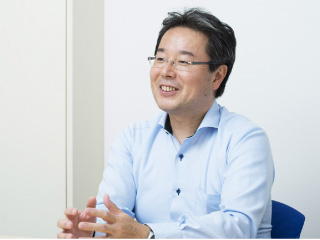
Mr. EGAWA Kiyoshi
PROFILE
Kyowa Electronic Instruments Co., Ltd.
Graduated from the Graduate School of Tokai University.
Completed the Master Program of Innovation for Design and Engineering in 2014.
I noticed the unprecedented network around Asia.
Making a presentation to the world's leading economists.
From my student days to today, I have built a career consistently in the world of wireless communications. I enrolled at AIIT when I worked as an engineer of a wireless broadband system at a foreign-affiliated communication company. I saw the organization and activities of the APEN (Asia Professional Education Network) launched by AIIT. I thought about using the network to develop and to expand the network of people and services in emerging countries.
After the rise of globalization, there was an increasing number of educational institutions that concludes partnership agreements with universities overseas even in Japan. The APEN makes a clear departure from these numerous inter-academic partnerships because it is recognized as an international organization by the governments of partner countries and Japan. This means that the activities of APEN have the possibility of impacting the politics of Asian countries. At AIIT, I hoped to come in contact with the global dynamism and to build a network of connections with people who had ideas similar to mine.
In fact, I was given an opportunity to present the results of PBL in Jakarta. The PBL theme was the development of a new financing model in international financial markets. I had the pleasure of discussing with the world's leading economics at the venue of our research presentation because of the framework of APEN. I clearly remember the excitement at that time.
Invention and innovation.
Since I worked on the development of wireless communication for many years, I did not look to acquire new skills. However, after completing graduate school and spending nearly 15 years in the workforce, AIIT helped organize my knowledge and skills, which I had worked very hard to accumulate, in a systematic manner.
In addition, I was able to establish my own interpretation of the difference between invention and innovation, which I could not obtain clearly from anyone. It was a question I had since I was in my 30s. As a result, I changed the way I approach my job. As an engineer, I used to find value in invention, which creates something new. Despite this, even to a question like the Zen riddle, "What is the difference between invention and innovation?", AIIT's professors have a clear-cut answer to expand the vision of students. After this, I could objectively see my core skills that I will not compromise. This helps me develop clear priorities for the skills used to bring about innovation, which also allowed for smooth collaboration with other companies.
Now, I realize the expanded use of my core skills with a global perspective regardless of industries.
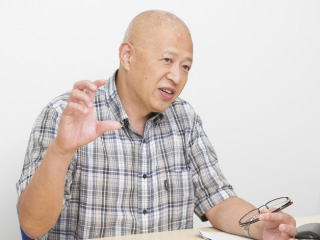
Mr. SHU Go
PROFILE
Representative Director of I.S. Brain Company
Graduated from Chuo University.
Completed the Master Program of Information Systems Architecture in 2010.
Setting the groundwork for employee education after learning on my own
after starting my company.
Upgrading my old knowledge of programming.
Before starting my own company, I worked as a systems engineer developing information systems for manufacturers. At that time, a programming language that is not heard about so much now, Prolog, was used in system development. It might be still used by universities and research institutions today, but as far as I know, Prolog is no longer used in system development by corporations. After starting my own company, I thought I could not offer good employee education without understanding the C and Java languages, which are often used in system development. I enrolled at AIIT to acquire new knowledge about information systems, including the current programming languages. I also thought that spending my time on education would be good for my health and work, instead of spending my time bar-hopping and saying it was for sales. It would be also helpful in the effective use of money. In addition, I hoped to meet people from the same industry that I did not get to interact with at work.
Continuing interactions with people from the same industry without a stake.
The results of studying at AIIT for two years exceeded the expectations I had at the time of enrollment. I obtained my programming skills after getting a job. I did not build fundamental skills from the ground up. Even so, while learning the mainstream languages for development in class, I deepened my understanding of the structure of a program in which the program I used at work and theories were connected to the program for the first time. In addition, an understanding of the management structure of system development helped me to look over the development operations for a more open perspective in terms of management.
Above all, the best asset was the connections to people in the same industry without a stake in my company. I continue to keep in touch with them even after completing the program. Although they are people in the same trade involved with IT in a broad sense, we have different specialties and positions. By connecting with these people, I can easily ask for advice from people who are familiar with areas where I have no knowledge. This is extremely encouraging for people who manage a company.
My company offers an incentive for enrolling at AIIT.
All the employees of my company were hired right after graduating from universities in China. For new employee training, we use textbooks and the methods I learned at AIIT. Also, my company offers an incentive for enrolling at AIIT to employees who are motivated to learn. As company policies, for example, the company approves when employees studying at AIIT leave work early if requested in advance. I try to make sure that they have as much time to study as possible. It is because my own experience makes me believe that it is fruitful to learn at AIIT. Even now, caring professors come to my office from time to time to give advice. I also find the time to visit the campus. AIIT is imperative for my company.
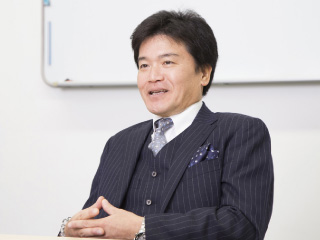
Mr. NAGAMINE Susumu
PROFILE
IT services company of an American insurance finance group.
Graduated from the Musashi Institute of Technology
(Currently Tokyo City University)
Completed the Master Program of Information Systems Architecture in 2008.
The fun of learning the learning.
The experience of actual work that does not go only with principles is verified in an academic environment where theories are the core to work.
More than 20 years after gaining professional experience, I enrolled at AIIT. My career was paralleled by the rise of information technology for financial services. I accumulated most of my experience through system planning, development project management, information technology audits, and information security on the management side, instead of experience as a programmer or system engineer. I wanted to see my experience and knowledge objectively in an academic environment (from an academic viewpoint).
The objective perspective here does not mean that I sought the organization and systematization of acquired knowledge. For most jobs, it is not sufficient to provide principles, and it is essential to consider a variety of goods and services. As a person who accumulated this experience, I wanted to see what I could do in place of education where theories were emphasized.
My stance toward work has changed after touching the stance of the professors.
As a matter of course, I acquired new knowledge through the extensive AIIT curriculum, and PBL became a valuable experience. Above all, what was most important for me was that I came in touch with the behavior of the professors who teach the courses.
The professors who taught me did not teach students only through textbooks. There were those who only used their own texts at all times, and those who added their ideas based on their own experience with the content of the textbooks, as well as those who mixed them together. As I reflected on my work, I noticed that I was limited in ideas and thoughts by thinking that following the rules of the office and the industry was the etiquette of professionals with common sense.
In comparison, if the major directionality and the judgment of the essence are done in the right way, one might see new development by consciously adding a unique or surprising idea. Along with the real thrill of thinking outside the box that I believed was there, I learned about how to think outside the box from the professors' teaching posture.
In addition, I can now use the approach of returning to the origin when in doubt, which is a distinctive characteristic of learning, in various scenes. I have been able to stop excessive foreseeing to prevent problems at work beforehand.
Problems at work are one of the elements of learning.
What I have gained from AIIT is the process of learning. Looking back, I learned by taking a goal-directed approach (objective- and result-oriented approach), such as entering further education, graduation, and getting a job, not only at work but also with school all the way to university. For the first time, I enjoyed the sense of satisfaction in the process of learning, in other words, the process of knowing and acquiring something new at AIIT. Since then, I try to think that even problems at work as life-enriching learning. If I do not learn anything from them, I think about how I can enjoy the process of learning.
The most meaningful achievement from studying at AIIT was that I experienced the fun of learning. This experience gave me the freedom to approach my work and my ideas in a different way.
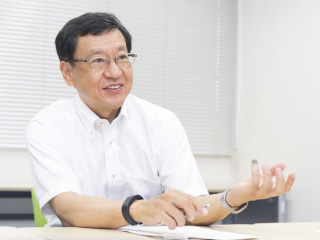
Mr. FUCHIZAWA Kazuyuki
PROFILE
Director of Tokio Marine & Nichido Systems
Graduated from Waseda University.
Completed the Master Program of Information Systems Architecture in 2011.
Extensively refreshing my information technology skills.
I chose to go to AIIT to learn so I could remain motivated.
I was 48 years old when I enrolled at AIIT. I worked on a system development team, being transferred to a subsidiary, which sparked me to learn. I called it a drastic reform, and it was the time for me to reform myself from the foundation. The new system I had to develop required introducing the latest technology. However, while I worked in an IT planning department at the head office for ten years, mainly doing internal adjustments, the trendy words of information technology had changed drastically. I became aware that I could not catch up to the latest technology at that time even though I was in a position to manage development. I started to fully realize the need to relearn and refresh my knowledge of IT.
Although I participated in training sessions by manufacturers, I could not have a wide-angle view of the latest status in the IT industry because the area was too specific. I also thought about taking correspondence courses from a graduate school, but I figured that it would be more effective to focus on studying in class at school, instead of studying at home with the tension after work. This is why I decided to go to AIIT.
Acquiring the basics can increase knowledge like a rolling snowball.
I think I mostly achieved my intention for going to AIIT, which was to renew my knowledge of IT by taking classes in the first year. I did not want to master all of the latest technology in the first place. What I wanted was to know the meaning of the trendy keywords and to understand the position of the IT industry as a whole, as well as to be able to indicate direction in development. By acquiring basic knowledge, the knowledge will be reinforced in daily tasks, and the amount of knowledge will increase like a rolling snowball. The classwork at AIIT became the core.
I can use my learning at work because I learned in depth.
The academic achievement I did not envision at the time of enrolling at AIIT was that I would understand project management (PM) systematically. I had already experienced project management at work. Even so, it was a task that followed the rules of the office. AIIT helped me realize that I did not understand the essence of the concept even though I practiced project management by going through the motions. AIIT offers 15 slots in 90-minute lectures that focus on PM four times a year. Compared to external seminars for businesspeople, AIIT allocates time differently. Perhaps, there is no other opportunity for people to acquire in-depth knowledge of PM like AIIT. I introduced the PM method called Earned Value Management (EVM) for my company's operations because I fully understood its effectiveness until I learned to master it at AIIT practically. In addition, PBL helped through practical exercises. After assuming the post of director, I thought back over the content of the CIO Functions in the first year, which was taught by an executive of a IT company. My learning and experiences at AIIT become a useful asset professionally in a variety of aspects.
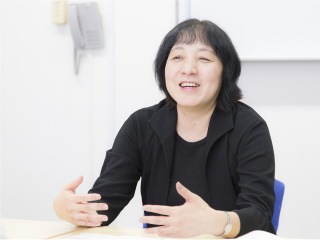
Ms. MIYAKE Yumiko
PROFILE
IT-related company of a general electronics manufacturer.
Graduated as a science major from a public university.
Completed the Master Program of Information Systems Architecture in 2014.
AIIT is a place for students to build new connections.
AIIT offers a support system in consideration of balancing work and studies.
I enrolled at AIIT to relearn IT systematically. As I took charge of project management and the coursework of IT service management inside and outside of the company, I wanted to reorganize my past experience, knowledge, and skills, so I could flexibly capitalize on my knowledge of the latest IT technology for personnel development.
I found the option to go to graduate school while working full time. However, it seemed very difficult to go to school while managing a busy schedule and carry out daily tasks in the beginning. When I only took one subject as a non-degree student of AIIT, I learned that many professionals study at AIIT while balancing work and school. That is why I decided to enroll in the Master Program of Information Systems Architecture.
After enrolling in the program, I realized the effectiveness of AIIT's support system that takes into account the fact students are professionals. For example, all the lectures are recorded on video, so students who are absent can watch at home and or use it to review their lessons. The archived videos can be used to study again after completing the program.
What helped me the most was that AIIT employs a four-quarter system. The curriculum of each subject lasts three months, which allowed me to plan my work schedule for the next three months and to select the lectures I could take. What is more, because students can register formally after attending a class three times, I examined the class content and schedule to formally register the subjects that only matched my learning objectives, which allowed me to maximize my time efficiently.
I realized that my view expanded, which I did not envision at the start.
What I had learned at AIIT for two years was more than what I expected to achieve in the beginning. Not only did I organize my expertise, which was a goal when I started going to AIIT, but also I absorbed the latest knowledge of IT from an academic viewpoint. In addition, the expansion of my perspective on a global scale was an achievement that I had not envisioned at the start. AIIT allows students to take the classes in another program. My international sense was developed through the Master Program of Innovation for Design and Engineering. By thinking about communications with people from different cultures, I also became interested in politics, economics, and history.
Even after completing the program, I spent much time with my classmates from AIIT. I feel it is meaningful to think about innovation in Japan, not just in the IT industry. This perspective has continued from the day I started taking classes at AIIT.
People might think it would be very challenging to go to university while working full time, just as I hesitated. Even so, the desire to learn opens doors to a new world. I hope that you will capitalize on the chance to grow and not miss out.
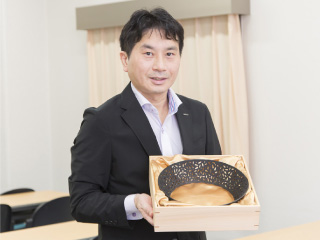
Mr. MORI Noriaki
PROFILE
Product designer and business producer.
Graduated from Musashino Art University.
Completed the Master Program of Innovation for Design and Engineering in 2013.
Increasing the communication power of design.
I was a winner in an international design competition by teaming up with other graduates.
In 2013 and 2014, my team, Team INNOS, was honored at an international design competition and received the highest award and the award of excellent two consecutive years in a row. Team INNOS is a design team formed with AIIT graduates. Four designers with a shared passion met through the class gathered with the desire to have a place of kotozukuri and monozukuri outside of work even though the team members are from different industries. Through the interactions that continued after completing the program, we submitted a design created from the ideas we had while studying at AIIT. This led to major awards. There are currently eight members on the team. While we flexibly adjust our involvement depending on the situation at our primary job, we continue to carry out creative activities freely without belonging to companies and schools.
I saw my design objectively after temporarily leaving my past achievements.
My primary job is a product designer. I am the head of a design branch office at a foreign-affiliated electronics manufacturer. I am engaged in branding in the Japanese market and other tasks to develop design strategies that directly link to management. I increasingly work with people in management, marketing, sales, and other departments. I negotiate with people outside the company on a daily basis. I talk to people in the technology department, as well as those who are less interested and have less knowledge of design. I have to get them to understand the value created by design. I decided to study at AIIT because I thought it would be necessary to have the skills to communicate these elements to people outside my particular domain.
I wanted to see my ideas and skills in product design in a place without interest by setting my past achievement aside. I also wanted to acquire the missing pieces to execute a project from a broad perspective by positioning design as important management resources.
My capacity to respond to criticism and objections improved at work.
I evaluate myself through the achievements I gained from learning at AIIT, and those were more than enough. Of the achievements, working with students with different expertise and from different generations made me understand and respond to different opinions and views. Especially in PBL, because I formed a collaborative team with the students in the Master Program of Information Systems Architecture, we carried out a project with students who had completely different backgrounds. Through these experiences, my work resilience improved, and I now have a capacity to handle unexpected criticism and objections, which helps me to reinforce my ability to convey design.
In the markets of the electronics market, the industries continue to see fierce competition on a global scale. My mission is to fully display my skills acquired from AIIT to win the competition at work. On the other hand, in the team with my classmates from AIIT, I want to purely pursue the pleasure of kotozukuri and monozukuri.
